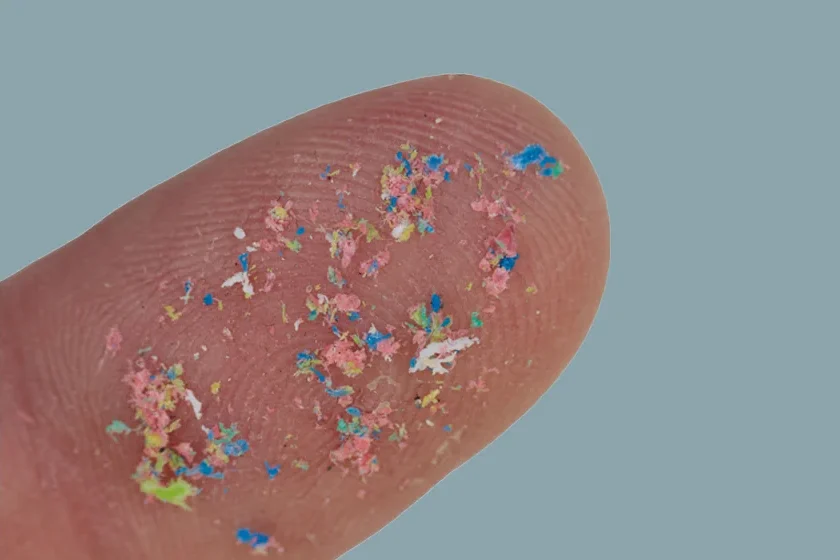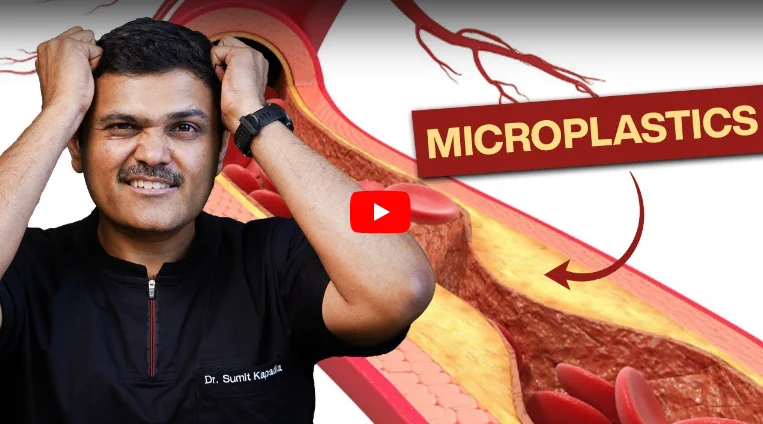
The average person unknowingly consumes about a credit card’s worth of plastic every week! Yes, you read that right, tiny plastic particles are sneaking into our bodies, and the latest research shows they’re even showing up in our blood.
Microplastics, those minute particles of plastic debris, have infiltrated our environment so deeply that they are now circulating in our bloodstream.
Dr. Sumit Kapadia, a renowned vascular surgeon from Vadodara, is here to shed light on this emerging concern and what it could mean for our vascular health.
Microplastics Found in Human Blood: A Potential Cardiovascular Threat
Microplastics are everywhere, in the air we breathe, the water we drink, and even the food we eat. These tiny particles, often less than 5 millimeters in size, are byproducts of the breakdown of larger plastic items or are directly produced in that size for use in cosmetics and other products.
Recent studies have shown that microplastics can penetrate our bodies through various routes, eventually making their way into our bloodstream.
A groundbreaking study published in 2022 revealed that microplastics were detected in the blood of 17 out of 22 healthy adults tested.
These findings are alarming because they suggest that once microplastics enter the body, they don’t just stay in the digestive system but can travel throughout the body, potentially lodging in vital organs, including the heart and blood vessels.
As a vascular surgeon, I’m particularly concerned about the implications of microplastics on cardiovascular health. Our circulatory system is vital for delivering oxygen and nutrients to tissues and removing waste products. The introduction of foreign particles like microplastics could have unknown and possibly severe consequences.
Link Between Microplastics in Your Blood and Vascular Health
The presence of microplastics in the bloodstream raises several red flags for vascular health. The circulatory system, which consists of arteries, veins, and capillaries, is delicate and finely tuned.
The introduction of foreign particles like microplastics could interfere with the normal functioning of these vessels, leading to inflammation, blockages, or even contributing to the development of cardiovascular diseases.
Studies have shown that microplastics can cause oxidative stress, a process where harmful free radicals damage cells and tissues. Oxidative stress is a known contributor to the development of atherosclerosis, a condition where arteries become clogged with fatty deposits, leading to heart attacks and strokes.
Additionally, microplastics can act as carriers for toxic chemicals, which can further damage the vascular system.
Imagine a scenario where microplastics lodged in blood vessels cause chronic inflammation.
This could lead to the gradual narrowing of arteries, reducing blood flow to vital organs and tissues. Over time, this could increase the risk of developing conditions like peripheral artery disease (PAD) or deep vein thrombosis (DVT), both of which are serious vascular conditions that can have life-threatening consequences.
Moreover, microplastics might not just remain in the blood. They could potentially accumulate in organs like the liver, spleen, and kidneys, where they could cause further damage. Research is still in its early stages, but the potential risks are significant enough that they cannot be ignored.
How to Avoid and Eliminate Microplastics from Your Blood
Given the ubiquitous presence of microplastics, completely avoiding them might seem impossible. However, there are steps you can take to minimize your exposure and help your body eliminate them:
Filter Your Drinking Water: One of the most common sources of microplastics is tap water. Using a high-quality water filter that can remove microplastics is a good first step.
Reduce Plastic Usage: Limit your use of single-use plastics like plastic bottles, straws, and bags. Opt for alternatives like stainless steel or glass whenever possible.
Choose Natural Fibers: Synthetic fibers from clothing are a significant source of microplastic pollution. Choose natural fibers like cotton, wool, or linen, which do not shed microplastics when washed.
Avoid Processed Foods: Microplastics have been found in various processed foods, particularly those packaged in plastic. Eating fresh, unprocessed foods can reduce your exposure.
Support Environmental Initiatives: Advocate for policies and practices that reduce plastic pollution, such as bans on single-use plastics and improvements in waste management.
Boost Your Body’s Detox Mechanisms: Some studies suggest that increasing your intake of antioxidants through foods like berries, nuts, and green leafy vegetables can help your body combat oxidative stress caused by microplastics.
Stay Hydrated: Drinking plenty of water can help your kidneys and liver flush out toxins, potentially reducing the burden of microplastics in your system.
Consult a Vascular Surgeon: If you have concerns about the impact of microplastics on your vascular health, consult with a vascular surgeon. They can provide guidance on monitoring and maintaining the health of your circulatory system.
Conclusion
The discovery of microplastics in human blood is a concerning development that highlights the far-reaching impact of plastic pollution. While the full extent of their effects on vascular health is still being studied, the potential risks cannot be ignored.
As a vascular surgeon, I urge you to take proactive steps to reduce your exposure to microplastics and support your body’s health through a balanced diet, regular exercise, and staying informed about emerging health threats.
We are living in an age where the consequences of our actions are coming back to affect our health in unexpected ways. By understanding the risks and making conscious choices, we can protect ourselves and future generations from the hidden dangers of microplastics.
FAQs
Microplastics in human blood are tiny plastic particles, less than 5 millimeters in size, that have been detected in the bloodstream. These particles can enter the body through ingestion, inhalation, or skin contact.
While research is ongoing, microplastics are suspected to contribute to various health issues, including cardiovascular diseases, due to oxidative stress and inflammation they may cause in blood vessels.
Microplastics in the bloodstream can cause oxidative stress and inflammation, potentially leading to conditions like atherosclerosis, peripheral artery disease, and other cardiovascular issues.
While completely eliminating microplastics from the blood may not be possible, reducing exposure through lifestyle changes and supporting your body’s natural detox processes can help minimize their impact.
If you’re worried about how microplastics might affect your vascular health, consulting a vascular surgeon can be beneficial. They can assess your risk factors and provide personalized advice for maintaining your circulatory health.

MBBS, MS, MRCS, DNB-Fellow
Dr. Sumit Kapadia
Dr. Sumit Kapadia / MR KAPADIA SUMIT a gold-medalist from Baroda Medical College, obtained his general surgical training and senior residency from SSG Hospital, Vadodara.

MBBS, MS, MRCS, DNB-Fellow
Dr. Sumit Kapadia
Dr. Sumit Kapadia / MR KAPADIA SUMIT a gold-medalist from Baroda Medical College, obtained his general surgical training and senior residency from SSG Hospital, Vadodara.




